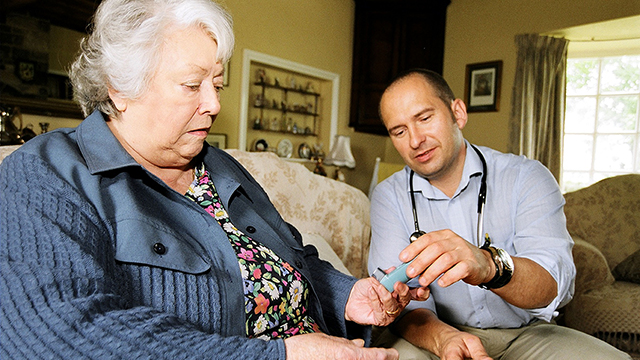With persistent concerns about health care expenditures, the health care field has recognized a group of patients known as super utilizers—people with complex health needs and socioeconomic challenges who have very high levels of hospital use. A well-publicized team-based care management model to address the needs of these patients is the hotspotting model pioneered by the Camden Coalition of Healthcare Providers in New Jersey, first brought to national attention by an article in the New Yorker in 2011. So far, interest in programs to help super utilizers has outpaced the available evidence on their effectiveness.
Recently published findings from an evaluation conducted by researchers at Mathematica Policy Research found that a high-intensity care management program modeled on the Camden model led to substantial reductions in short-term service use and spending for a small group of super utilizers in four states. In particular, the study found that Medicare fee-for-service patients enrolled in the program had 37 percent fewer unplanned readmissions than beneficiaries who had similar high service use and were not enrolled in the program.
The program was implemented by the Rutgers University Center for State Health Policy and funded by a federal grant from the Center for Medicare & Medicaid Innovation. The Rutgers center helped safety-net provider organizations in Allentown, Pennsylvania; Aurora, Colorado; Kansas City, Missouri; and San Diego, California adapt the Camden model for the high-poverty neighborhoods they were serving. Care teams at all four sites included some combination of nurses, community health workers, social workers, medical assistants, and behavioral health providers. The teams highlighted the importance of using primary and specialty care instead of—or as a follow-up to—emergency and hospital care. Because the program focused on both the medical and social determinants of health, teams also addressed patients’ nonmedical needs, including enrollment in social services, such as housing and Social Security disability benefits, and behavioral health service programs.
To study the program’s impacts on health care use and spending, Mathematica researchers compared outcomes of 149 participants who had Medicare fee-for-service coverage with outcomes for a similar group of Medicare fee-for-service beneficiaries whose health and frequent use of services would have made them eligible for the program.
Although many other care management programs have not achieved this kind of success, the Center for State Health Policy program shares features, such as targeting very high-risk patients and providing frequent in-person contact, with the relatively few models that have succeeded in reducing hospital admissions or readmissions. But the study’s low sample size limited the precision of estimated impacts, and as a result, its authors suggest the encouraging findings warrant additional testing.
“Our work contributes to the body of evidence on how care management programs might improve patient outcomes,” said Purvi Sevak, senior researcher at Mathematica. “Our findings on this adaptation of the Camden model provide insight into the ability to replicate the model in different settings. Although these results are promising, this model will need further testing at larger scales before it is possible to make stronger conclusions about its impacts.”
Want to learn more about the study? Mathematica researchers Purvi Sevak and Cara Stepanczuk recently discussed the findings on the Managed Care Cast, a podcast produced by the American Journal of Managed Care. More information about the original evaluation that led to the journal article is available in a formal report prepared for the Centers for Medicare & Medicaid Services.
About Mathematica
Mathematica is the insight partner for public- and private-sector changemakers. Our 1,200+ experts are pioneers in their fields, continually reimagining the way the world gathers and uses evidence. We dive into urgent social challenges with rigor and objectivity to give our partners the clarity they need to see clearly and act quickly.
Mathematica Media Contact:
J.B. Wogan
E: jwogan@mathematica-mpr.com
P: 202-838-3618

